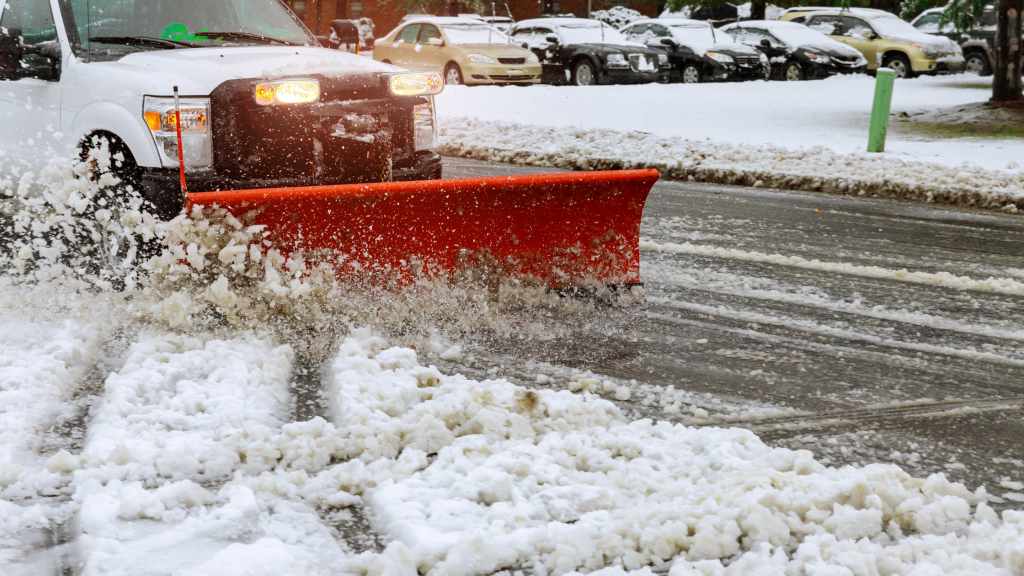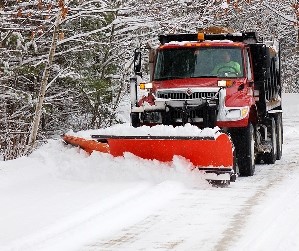Snow Removal Reminders

The snow has begun to fall. We would like to remind everyone about factors that may come into play during a snow event. Trigger Depth Most HOA contracts will state an accumulation total that must be met before snow removal services commence. For most places, the trigger depth is between 1-2 inches of snow. Accumulations Your contract’s definition of “trigger depth” is extremely important. Depending on the wording, trigger depth can be met when all the snow on the ground is at or above a certain amount. In other cases, trigger depth might only apply to “single-event” storms; this method disregards how much snow is already on the ground and only measures how much new snow has fallen. If the amount of new snow is less than the trigger depth, snow removal will not occur. It is important to know the difference between these plans and which one you have; if there are five consecutive snowstorms where less than 1 inch falls, and you have a single-event contract, snow removal services will not be triggered. Most contracts are written, “by event.” Timing The second most important clause of your contract is when the snow removal service must be completed. In most cases, “final cleanup” is required between 6 – 12 hours after the snow has stopped falling. Sometimes, the timeline can change based on how much snow has accumulated. The more snow that falls, the more time is allowed for cleanup. Open-ups Open-ups are another clause in the snow removal contract implemented after the snowfall exceeds a particular total. For example, the snow removal company will perform an open-up if 4 inches of snow has fallen and there is still a forecasted 4 inches. They will perform a single pass through the roadways with a plow so that vehicles can enter and exit the complex. A critical section of the open-ups clause to look over is whether open-ups include driveways or just the main roadways. The typical language will state that an open-up will occur before ___ AM and/or after ___PM. It is always good to be prepared for significant snowfalls. We hope you have a safe winter!
Snow Contracts and Expectations

Winter in Minnesota is quickly approaching! When the white stuff starts to fall, it’s important to understand how specifications in snow contracts will affect when snow is removed from your roadways, driveways and sidewalks. Just like snowflakes, every snow contract is unique. To better understand the nuances of your contract, check with your Board or contact Sharper Management. We are happy to share this information with you. While unique, there are some common specifications of a snow removal contract. Some of these specifications are: Trigger Depth – Your contract likely states an accumulation total that must be met before snow service will commence. This can be anywhere from a trace up to multiple inches. For most, it is somewhere between 1 – 2 inches. This can be one of the biggest variables in the pricing of your snow contract and the definition of “trigger depth” is important. Does your contract state that service will happen when the trigger depth has been met for a single snow event/storm, or is it vague regarding at what point trigger depth is met? There is a significant difference between the definitions. For example, you could have a winter where less than 1 inch of snow accumulates per event, but there may be many events like this in a relatively short period of days thus creating heavily packed drives in your association. Most contracts are written “by event”. Timing – The second most important component of your contract is the time in which snow service must be completed. For most contracts, “final cleanup” is somewhere between 6 – 12 hours after the snow has stopped falling. This timeline is also subject to snow accumulation totals. The more snow received, the more time allowed for cleanup. Open-Ups – Most contracts provide for an open-up during snowfall events that exceed a particular total. For example, if 4 -6 inches of snow depth is met, but the event has not stopped, it is common for an open up to happen. Open-ups are simply done to allow vehicles to come in and out of the community. They are not the same as a final clean up and generally consist of a single pass through the roadways with the plow. One thing to define in your snow contract is whether open-ups include driveways, or just main roadways. Typical language states that an open-up will occur prior to __AM and/or after __PM. Then the final cleanup will occur per the contract as discussed in the “timing” section above. We realize that snow is inevitable and, while often beautiful, can create some frustrations. Knowing a bit more about how your snow contract is written may alleviate some of these frustrations over the coming months. Stay safe this winter!
Snow Contracts and Expectations

As much as we all don’t want to admit it, winter is coming back to Minnesota. When the white stuff starts to fall again, it’s important for homeowners to understand how specifications in snow contracts will affect when snow is removed from your roadways and driveways. First off, every snow contract is unique. To better understand the nuances of your contract, check with your Board or contact Sharper Management. We are happy to share this information with you. In this article, we will be covering some of the most common specs of a snow removal contract. Specs that will affect your contract include: Trigger Depth – Most contracts will state an accumulation total that must be met before snow service will commence. This can be anywhere from a trace up to multiple inches. For most, it is somewhere between 1 – 2 inches. This can be one of the biggest variables in the pricing of your snow contract. Accumulations – The definition of “trigger depth” is important. Does your contract state that service will happen when the trigger depth has been met for a single snow event/storm, or is it vague regarding at what point trigger depth is met? There is a significant difference between the definitions. For example, you could have a winter where less than 1 inch of snow accumulates per event, but there may be many events like this in a relatively short period of days thus creating heavily packed drives in your association. Most contracts are written “by event”. Timing – The second most important component of your contract is the time in which snow service must be completed. For most contracts, “final cleanup” is somewhere between 6 – 12 hours after the snow has stopped falling. This timeline is also subject to snow accumulation totals. The more snow received, the more time allowed for cleanup. Open-Ups – Most contracts provide for an open-up during snowfall events that exceed a particular total. For example, if 4 -6 inches of snow depth is met, but the event has not stopped, it is common for an open up to happen. Open-ups are simply done to allow vehicles to come in and out of the complex. They are not the same as a final clean up. Open-ups generally consist of a single pass through the roadways with the plow. One thing to define in your snow contract is whether open-ups include driveways, or just main roadways. Typical language states that an open-up will occur prior to __AM and/or after __PM. Knowing a bit more about how your snow contract is written may alleviate some frustrations over the coming months. Stay safe this winter!
Snow Contracts and Expectations

As much as we all don’t want to admit it, winter is coming back to Minnesota. When the white stuff starts to fall again, it’s important for homeowners to understand how specifications in snow contracts will affect when snow is removed from your roadways and driveways. First off, every snow contract is unique. To better understand the nuances of your contract, check with your Board or contact Sharper Management. We are happy to share this information with you. In this article, we will be covering some of the most common specs of a snow removal contract. Specs that will affect your contract include: Trigger Depth – Most contracts will state an accumulation total that must be met before snow service will commence. This can be anywhere from a trace up to multiple inches. For most, it is somewhere between 1″-2″. This can be one of the biggest variables in the pricing of your snow contract. Accumulations – The definition of “trigger depth” is important. Does your contract state that service will happen when the trigger depth has been met for a single snow event/storm, or is it vague regarding at what point trigger depth is met? There is a significant difference between the definitions. For example, you could have a winter where less than 1″ of snow accumulates per event, but there may be many events like this in a relatively short period of days thus creating heavily packed drives in your association. Most contracts are written “by event”. Timing – The second most important component of your contract is the time in which snow service must be completed. For most contracts, “final cleanup” is somewhere between 6-12 hours after the snow has stopped falling. This timeline is also subject to snow accumulation totals. The more snow received, the more time allowed for cleanup. Open-Ups – Most contracts provide for an open-up during snowfall events that exceed a particular total. For example, if 4″-6″ of snow depth is met, but the event has not stopped, it is common for an open up to happen. Open-ups are simply done to allow vehicles to come in and out of the complex. They are not the same as a final clean up. Open-ups generally consist of a single pass through the roadways with the plow. One thing to define in your snow contract is whether open-ups include driveways, or just main roadways. Typical language states that an open-up will occur prior to __AM and/or after __PM. Knowing a bit more about how your snow contract is written may alleviate some frustrations over the coming months. Stay safe this winter!
